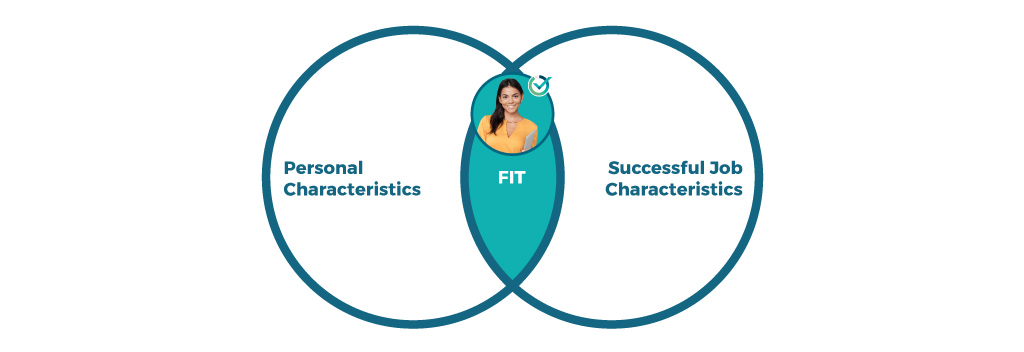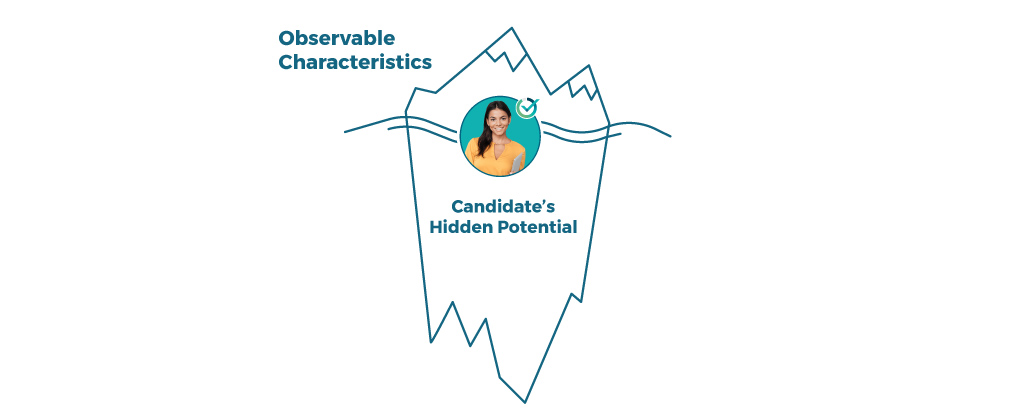
Organizations everywhere are experiencing a profound disruption in the ways individuals interact and work. Many will find it tricky to understand and clearly map out a plan that can confidently carry them into the future. But, as we move toward imagining a post-pandemic era, organizations will need to meet the new demands for how we live and work.
In a recent article from Deloitte, Reimagining Human Resources, the authors argue that despite disruption, HR can help organizations survive and thrive by shifting their approach around these three areas:
Let’s break down and further examine the disruption areas expressed by Deloitte vs. areas of opportunity that HR leaders can address so organizations can successfully combat the current disruptions and rise for the future.
Ensuring Job Fit is HR’s role to play when it comes to helping organizations combat the disruptions of the moment and preparing for the future. So, what exactly is Job Fit?
In simple terms, Job Fit is successfully matching talent to opportunity. The opportunity is defined by an organization's strategy and where it desires to go. Matching the right talent to execute your strategy can be a determining factor between success or failure. Think about the emerging roles and new departments created for an evolving future in your organization. Three years ago, there wasn't a data privacy office or a DE&I department, but now, these jobs and departments are present in all major organizations. These new roles and departments are results of organizational strategy needing to:
In more technical terms, Job Fit is the degree of compatibility between an individual’s personal characteristics (aptitudes, abilities, interests) and the characteristics that determine success in each job (what your organization needs). Occupational researchers, career coaches, industrial/organizational psychologists, and HR practitioners agree that individuals perform best when they hold positions best suited to their traits, or in other words—when the person-environment fit is high.

Organizations succeed when they realize that strong performance and results come from their people. When employees work in jobs where their talents, abilities, and interests are maximized—their performance soars. Studies show that proper Job Fit improves engagement and job satisfaction, resulting in increased productivity.
Although there are many tools to help organizations learn about a person: resumes, past performance, learned skills and experience, education, training, structured job interviews, and background checks, none of these alone can help predict an individual's future performance. The usual methods tell us about their past and present, but we need to select and develop for the future.
Backed by over 30 years of research, PXT Select® assessments provide a validated process for establishing Job Fit—helping organizations understand people at a deeper level and predict future job success.

Learn more about Job Fit in our Job Fit Journal eBook or contact us here to learn how we can help you future-proof your company.
In a recent article from Deloitte, Reimagining Human Resources, the authors argue that despite disruption, HR can help organizations survive and thrive by shifting their approach around these three areas:
- The future of the enterprise
- The future of the workforce
- The future of how work gets done
Let’s break down and further examine the disruption areas expressed by Deloitte vs. areas of opportunity that HR leaders can address so organizations can successfully combat the current disruptions and rise for the future.
Future-Proofing Human Resources
| Disruption | Opportunities |
| Enterprise: Organizations have access to more data than ever before but are struggling to know what to do with it. |
When it comes to making talent-related decisions, business leaders should work with HR to gather and organize accurate and reliable data to help them identify new traits and behaviors needed in their workforce. This will help them thrive through digital transformation and even identify future needs before they arise. Organizations can do this by focusing on the concept of Job Fit (A concept that we will explain further). |
| Workforce: People are working for longer than ever before, even as their job descriptions are shifting under their feet. |
With rapid changes impacting a business's need to re-skill and upskill its workforce, Job Fit can be an organization's guide to understanding the core characteristics of their people and how to leverage their strengths to develop them and help them grow into new roles. |
| How work gets done: As work becomes increasingly digitized and virtual, workers must learn how to leverage increasingly complex technologies in order to do their jobs, and future jobs yet to be imagined. |
In the coming years, new roles will emerge, and workforces will need to adapt and change. Job Fit can help organizations quickly pivot and remain productive in a dynamic business world while at the same time providing the right tools for its leaders to navigate through the change. |
Ensuring Job Fit is HR’s role to play when it comes to helping organizations combat the disruptions of the moment and preparing for the future. So, what exactly is Job Fit?
In simple terms, Job Fit is successfully matching talent to opportunity. The opportunity is defined by an organization's strategy and where it desires to go. Matching the right talent to execute your strategy can be a determining factor between success or failure. Think about the emerging roles and new departments created for an evolving future in your organization. Three years ago, there wasn't a data privacy office or a DE&I department, but now, these jobs and departments are present in all major organizations. These new roles and departments are results of organizational strategy needing to:
- Safeguard people's data so they can appropriately serve their customers and comply with emerging regulations
- Build a compelling culture and employer branding to attract and retain the best talent to meet evolving business needs
In more technical terms, Job Fit is the degree of compatibility between an individual’s personal characteristics (aptitudes, abilities, interests) and the characteristics that determine success in each job (what your organization needs). Occupational researchers, career coaches, industrial/organizational psychologists, and HR practitioners agree that individuals perform best when they hold positions best suited to their traits, or in other words—when the person-environment fit is high.

Organizations succeed when they realize that strong performance and results come from their people. When employees work in jobs where their talents, abilities, and interests are maximized—their performance soars. Studies show that proper Job Fit improves engagement and job satisfaction, resulting in increased productivity.
Although there are many tools to help organizations learn about a person: resumes, past performance, learned skills and experience, education, training, structured job interviews, and background checks, none of these alone can help predict an individual's future performance. The usual methods tell us about their past and present, but we need to select and develop for the future.
Backed by over 30 years of research, PXT Select® assessments provide a validated process for establishing Job Fit—helping organizations understand people at a deeper level and predict future job success.

Learn more about Job Fit in our Job Fit Journal eBook or contact us here to learn how we can help you future-proof your company.
Did You like This Content?
Join our newsletter to get insights,
updates and more!

Found this post useful? Share it.